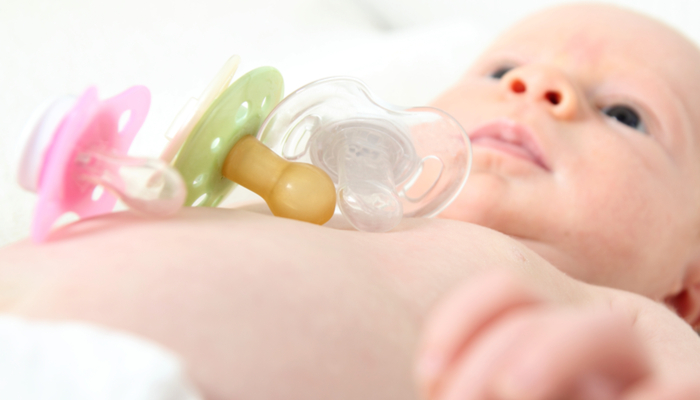Asbestos
[Kimberly Hall](https://www.shutterstock.com/image-photo/black-white-checkered-floor-1870556?src=GLZ0mtpLoNz-W47rl_Ksgw-1-9)Most people likely believe that the U.S. Government banned all asbestos in the United States several decades ago. However, several products contain asbestos still exist today. Brake pads, some vinyl tiles, roofing materials and other products still contain asbestos.Asbestos potentially causes mesothelioma, a very slow killer. When an unsuspecting individual inhales asbestos or picks it up second-hand from a family member who may have asbestos on work clothing, the person does not become sick right away. In fact, when mesothelioma symptoms finally lead the individual to a doctor, it is too late. Another issue is that a diagnosis is often delayed because the symptoms get mistakenly diagnosed as something else.
The cancer caused by asbestos usually attacks the pleura or lining of the lungs, although there are other types of mesothelioma. Whether a person suffers from pleural mesothelioma or another type, there is no cure. Most people suffering from asbestos-causing cancers die within a few years after getting diagnosed. Asbestos kills silently, taking decades to produce symptoms.
EcoWatch points out that in 2010, the President‘s Cancer Panel called the number of environmentally induced cancer cases in the United States “Grossly underestimated.”
DEHA
[molekuul\_be](https://www.shutterstock.com/image-illustration/bis2ethylhexyl-adipate-deha-diisooctyl-plasticizer-molecule-275525639?src=TN9w_fvqulOHsCt3XZdlmw-1-5)Di(2-ethylhexyl)adipateor or DEHA is used in PVC plastics and in plastic wrap. It is listed as a “Probable carcinogen.” However, as far back as the 1990s, studies showed that DEHA caused liver tumors in mice. The National Center for Health Research also explains that other studies concluded that “DEHA migrates from plastic wrap into food.” This is especially true for high-fat foods.While the U.S. Food and Drug Administration (FDA) does not provide guidelines for safe levels of DHEA due to lack of data regarding the health effects on humans, other sources say there is a link between DHEA and developmental toxicity.
BPA
[monticello](https://www.shutterstock.com/image-photo/composition-plastic-bottles-caps-366732347?src=c5wTHn3t2YCyFQAuut4Gbg-1-32)Bisphenol A (BPA), used in a number of products such as food cans, other types of food containers such as shatterproof plastic containers and even cash register receipts, is considered a carcinogen by many sources. Some manufacturers and big box stores make and stock children’s toys that contain BPA, apparently in spite of the known risks.BPA has links to developmental issues, infertility and miscarriages, heart disease, diabetes, liver disorders and several other health issues.
EcoWatch reported in 2014 that the FDA “Bungles BPA Study, Triggering Uproar within Scientific Community.” The report states that the National Institutes of Health (NIH) and the FDA warned researchers that the lab that the researchers planned to use during a study on BPA was contaminated. Yet the researchers used the lab anyway. The FDA subsequently published results, declaring BPA “Virtually harmless,” causing the uproar within the scientific community.
While the FDA claimed the BPA contaminated lab had no bearing on the outcome of the study, Gail S. Prins, professor of physiology at the University of Illinois at Chicago, stated, “If your controls are contaminated, you’ve got a failed experiment and the data should be discarded…”
Chrome-6
[Gl0ck](https://www.shutterstock.com/image-illustration/steel-metal-tube-industrial-background-118380181?src=YGL9AmcjtUlkuMN0YQccMQ-1-57)Hexavalent chromium, or Chrome-6, is a known carcinogen used in the manufacture of products such as textile dyes and stainless steel.The California State Water Resources Board (SWRCB) describes cleanup related to a tragic event that occurred in the small town of Hinkley California and surrounding area. Between 1952 and 1966, Pacific Gas & Electric (PG&E) “Used hexavalent chromium, also known as chromium 6, to fight corrosion in cooling tower water.”
Some of the chrome-6 got into groundwater, resulting in chrome-6 contamination of the drinking water. The chrome-6 contamination of drinking water caused several deaths.
Phthalates
[riopatuca](https://www.shutterstock.com/image-photo/baby-diferent-orthodontic-pacifiers-196514732?src=2X40h7H0ZsuP0ok1QXJgTw-1-33)Used in hundreds of different products, including many cosmetics and personal care items such as hair spray and aftershave, as well as vinyl flooring, wall coverings, baby care products, toys and detergents, the FDA claims “It’s not clear what effect, if any, phthalates have on human health.” However, other sources claim that phthalates are linked to reproductive harm and early puberty in girls.The FDA did cite the fact that the American Academy of Pediatrics published a study that determined that infants exposed to baby care products commonly associated with phthalates “Showed increased levels of phthalate metabolites in their urine.”
TBBPA
[Dmitry Kalinovsky](https://www.shutterstock.com/image-photo/woman-choosing-child-car-seat-newborn-179698013?src=LRdo6PgIPZpyll7hqPABaA-1-73)Tetrabromobisphenol A (TBBPA) is a commonly-used fire retardant and also used in some consumer electronics. EcoWatch points to the fact that results of several studies determined that TBBPA causes “Aggressive” uterine cancer.In reporting on more than 5000 children’s products containing toxic chemicals, EcoWatch lists infant car seats as one of the products containing TBBPA, based on reports filed with the Washington State Department of Ecology.
Formaldehyde
[baitong333](https://www.shutterstock.com/image-photo/particle-board-wood-481736905?src=hb-PWMAWQhhcJjT8hLr0GA-1-9)Several types of cosmetics and household cleaning products contain formaldehyde. It is also used in some types of glue, paper, particle board and plywood production. Even mortuaries and medical laboratories use formaldehyde as a preservative.The National Cancer Institute says that exposure to formaldehyde potentially causes short-term effects such as wheezing, watery eyes and burning in the eyes, nose or throat. The NCI also reports that in 1987, the EPA classified formaldehyde as a “Probable human carcinogen under conditions of unusually high or prolonged exposure.” Several other agencies list formaldehyde as a “known carcinogen.”
Political influence is apparently responsible for delays in EPA regulation of formaldehyde.
PFOA
[science photo](https://www.shutterstock.com/image-photo/drinking-water-poured-into-glass-131075399?src=HVt3ywxzBELYKQMg_Me5bw-1-9)Known as one of the perfluorinated chemicals, PFOA is on the list of 18 unregulated toxic chemicals recently discovered in samples of drinking water taken from one-third of water utilities across the United States. Scientific American explains that researchers from the U.S. Geological Survey and EPA analyzed the samples taken from the water sources, which the agencies kept anonymous.PFOA compounds are linked to several types of cancer, and according to a scientific panel, also probably linked to thyroid disease, pregnancy-induced hypertension and high cholesterol levels.
